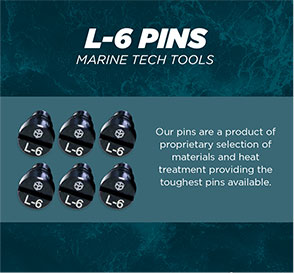Mahi-mahi, also called dolphinfish, gets its name from a Hawaiian word meaning “very strong.” With beautiful, unmistakable coloring and lean, mild-tasting meat, the mahi-mahi is definitely a coveted prize!
Ready to try your hand at it? Here’s what you need to know about finding, catching, and cooking this gorgeous fish.
How to Identify Mahi-Mahi
The Mahi-Mahi is stunning to look at, so it’s easy to identify. Its long, tapered body has a blunt, slightly rounded head (or more rounded, on females) and a dorsal fin that runs all the way from its head to its tail. At only a year old, it can grow up to four feet in length — and it can grow longer than six feet by the time it’s four years old.
In addition to its size and shape, though, the mahi-mahi's colors are what truly set it apart from other fish in the sea. Generally, mahi-mahi are bright green with yellow and blue highlights, but their coloring can vary a little to blue or silver.
And that’s not all: mahi-mahi are covered in chromatophores, cells that contain pigment and reflect light, allowing the fish to change color when it gets excited.
Where to Find Mahi-Mahi

Not only are mahi-mahi big, strong, and beautiful, but they’re also very fast swimmers. Though they’re often found inshore during warm summer months, mahi-mahi have also been known to migrate long distances in very short amounts of time. They tend to travel in large schools, so where there’s one, there are usually more.
Mahi-mahi like to swim close to the surface, especially if there is anything floating in the water. That means good places to look for them are near commercial fishing floats, in areas with lots of floating debris, or around weedlines made of seaweed. Basically, if you see anything at all floating on the water, you might just find some mahi-mahi lurking nearby.
You can also look for them anywhere you’re likely to find small baitfish, since those — along with squid — make up their main diet. It’s not uncommon to come across some mahi-mahi while you’re fishing for other kinds of fish, so keep your eyes peeled for their distinctive glow.
How to Catch Mahi-Mahi

Mahi-mahi are aggressive hunters. Since they like to hang out around floating structures, many people have great luck bailing (tossing out chunks of bait to keep the fish interested) near floating seaweed. Trolling is another popular option.
Once you hook a mahi-mahi, the fun really begins. Usually, they leap right out of the water and into the air. It’s fun to watch, but be ready for a fight — mahi-mahi aren’t called “very strong” for nothing!
When fishing for mahi-mahi, it’s important to keep in mind that some states have specific regulations on the size and number that you can take home. Florida, for example, recently reduced the recreational daily limit to 5 per person or 30 per vessel. Be sure to check out the regulations for the area you’ll be fishing in before you head out.
How to Cook Mahi-Mahi

Mahi-mahi meat has a light, sweet flavor. It’s also considered among the healthier types of fish as it’s low in mercury and contains a number of vitamins and nutrients, including protein and omega-3 fatty acids.
Here are some simple, delicious mahi-mahi recipe ideas for you to try:
- Easy Mahi Mahi Recipe with Lemon Garlic Sauce
- Grilled Mahi Mahi with Mango Salsa
- Blackened Mahi Mahi Sandwich
- Grilled Mahi Mahi with Balsamic Tomato Salad
Don’t Miss this Beautiful Fish
When you head out to fish for mahi-mahi, you’re in for a beautiful catch, a fantastic aerial show, and a strong fight — and, at the end of it all, a delicious meal. This is one fish that does not disappoint!













